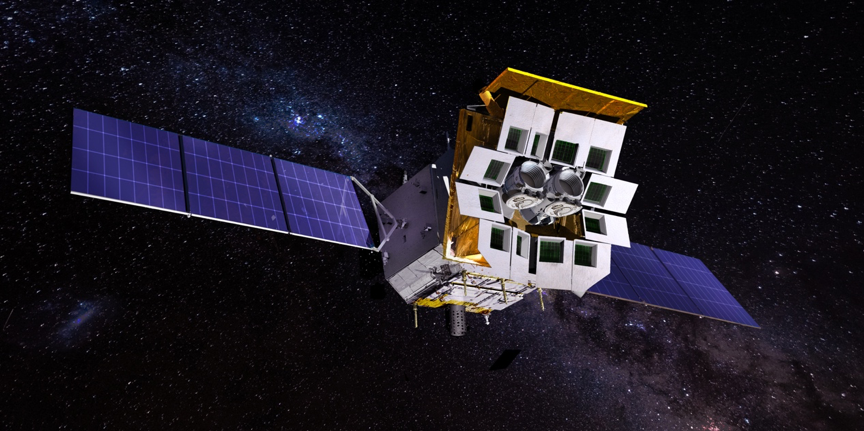HELSINKI – The Chinese Academy of Sciences aims to accelerate its progress in space science with a newly developed long-range and long-term roadmap for future missions.
The project will see China’s space science efforts — marked in recent years by successful dark, quantum and space physics projects — move into an accelerated phase of development. The long-term goal is to strengthen the country’s role in global space science.
The development is described in a paper recently published in the Chinese Journal of Space Sciences, written by Wang Chi, director of the National Space Sciences Center (NSSC) under the Chinese Academy of Sciences (CAS). It said the CAS instructed the Chinese space science community to develop a medium-term and long-term national plan for space science. A design release is said to be imminent.
As part of the project, five key scientific topics have been identified for future success. These are the extreme universe, space-time waves, a good view of the Sun and Earth, habitable planets, and space science and biology.
These are summarized as “One Black, Two Dark, Three Origins and Five Shapes.” These refer respectively to the study of dense celestial bodies such as black holes, the study of dark matter and dark energy, the origin of the universe, the solar system and life, and identifying the near-Earth system, the system of Earth-Moon, solar system, and extra-solar system, and the laws that govern matter and life in the space environment.
| Title | Explanation |
|---|---|
| The Extreme Universe | Exploring the origins of the universe and extreme physical conditions. |
| Time Ripples | Detecting gravitational waves and understanding gravity and space-time. |
| A Panoramic View of the Sun and Earth | Learning about the interaction between the Sun, Earth and the solar system. |
| Habitable Planets | Exploring solar system planets, exoplanets, and the possibility of life. |
| Biological & Physical Science in Space | The study of motion and life under spatial conditions, and the development of quantum mechanics and general relativity. |
Space science jobs before 2030
Five ongoing projects have been highlighted to deliver major breakthroughs by 2030 as part of the vision. These are DSL, eXTP, SPO, Taiji-2 and Earth 2.0. These received approval earlier this year.
The Enhanced Time X-ray and Polarimetry Project (eXTP) is an X-ray observatory to monitor the sky and enable multi-messenger studies for gravitational waves and neutrino sources.
Discovering the Sky at Longest Wavelength (DSL) will be a combination of 10 spacecraft orbiting the moon. These will use the moon as a shield against Earth’s electrical interference. In this radio-quiet environment, the spacecraft will listen for very long-wavelength signals from the early universe.
The Earth 2.0 (ET) observatory, scheduled to launch in 2028, will search for habitable planets from the Sun-Earth Lagrange point 2. The Solar Polar-orbit Observatory (SPO) aims to study the Sun’s figures. It will rotate at an inclination of more than 80 degrees with respect to the ecliptic plane.
Eventually Taiji-2, a constellation of three satellites in a heliocentric orbit of 60 million kilometers, will detect millihertz magnetic waves.
The paper notes that future missions, such as the Chang’e-7 mission to land the south polar, the 2025 Tianwen-2 near-Earth asteroid sample and main-belt comet exploration missions, the International Lunar Research Station ( ILRS), and space science carried out on the Tiangong Space Station will contribute to the overall vision.
Five projects have been selected in the CAS First Strategic Program (SPP) in Space Sciences. Activities launched under the SPP include the DAMPE dark probe, the QUESS quantum science satellite, the Advanced Space-based Solar Observatory (ASO-S) and the Einstein Probe, which was launched in January.
The SPP will now be replaced by a medium- and long-term national strategy for space science. In fact, none of the activities planned for the SPP under planetary and Earth science seem to have received approval. These proposals included retrieving a sample of an E-type asteroid and a Venus orbiter. Chinese scientists have called for a focus on asteroids and sample return missions.
International cooperation will also play a role in China’s space science projects. This builds on the extensive collaboration on the Einstein Probe and the upcoming SMILE mission with ESA. “In the future, China will initiate, propose and participate in international cooperation projects,” the paper reads.
The newspaper says: “Space science in China continues from the beginning to enter a new era of rapid development. “The release of the country’s first long-term and long-term strategy for space science is imminent, and a series of new space satellite missions are about to be approved to implemented.”
| Mission | Explanation | The goal |
|---|---|---|
| DSL (Detection of the sky at the longest wavelength) | A fleet of 10 spacecraft orbiting the moon uses the Moon as a shield against Earth’s electromagnetic interference. | In order to detect signals of very long wavelengths from the early universe, it provides insight into the “dark ages” of the universe. |
| eXTP (Enhanced X-ray Time and Polarimetry) | An X-ray facility designed for high-resolution time and polarimetry observations. | Studying dense celestial bodies such as black holes and neutron stars, and developing multi-messenger astronomy. |
| SPO (Solar Polar-orbit Observatory) | An orbiting spacecraft is looking up at the poles of the Sun. | To study solar energy and the origin of the solar wind. |
| Earth 2.0 (ET) | The space observatory is located at the Earth-Sun Lagrange point 2 (L2). | Conducting a long-term search for habitable exoplanets like Earth. |
| Taiji-2 | A constellation of three satellites in a heliocentric orbit with a 3-million-kilometer base. | Detecting millihertz magnetic waves, advancing the study of space-time and gravity. |
Related
#China #reveal #longterm #vision #space #technology



